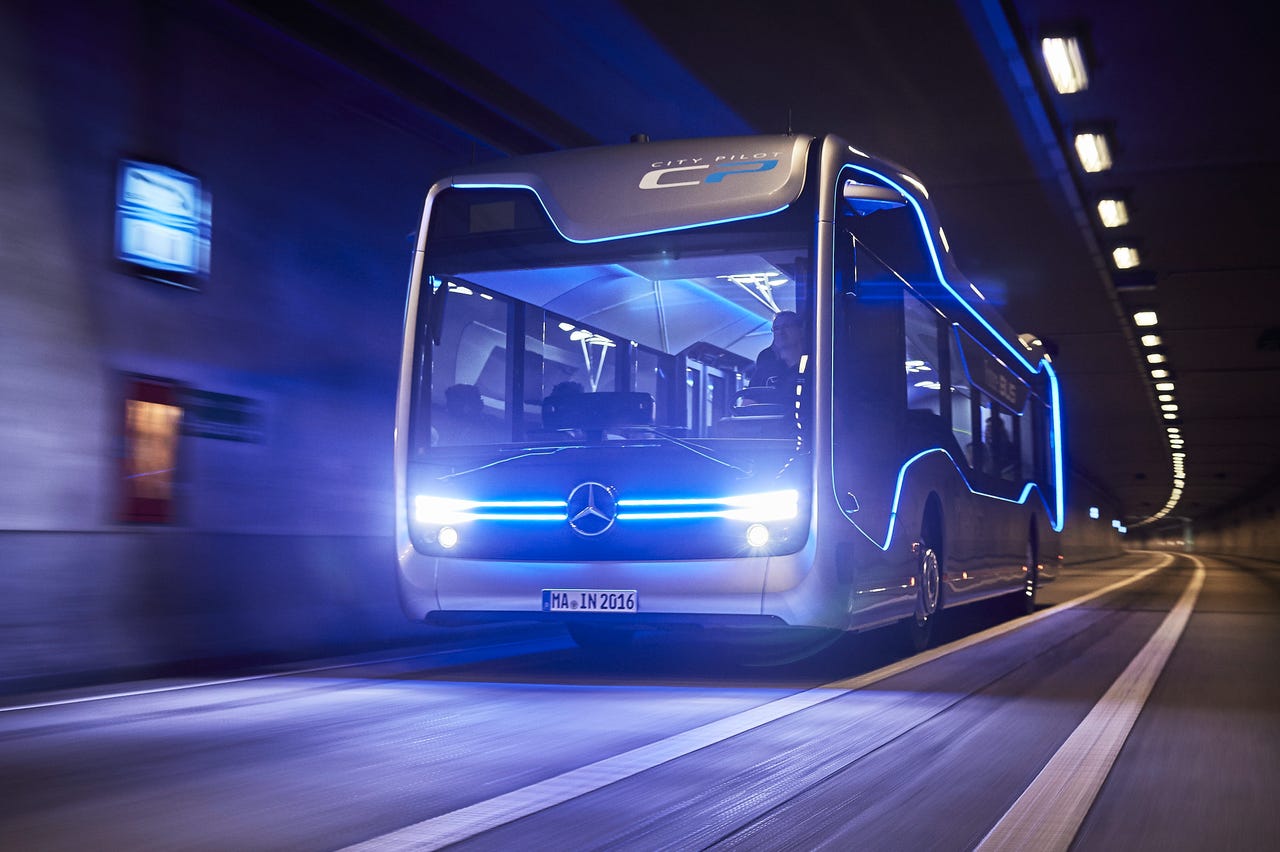This futuristic self-driving Mercedes-Benz bus just made a landmark journey


Mercedes-Benz's autonomous bus has successfully navigated a 20km route involving tunnels, traffic lights and junctions in The Netherlands.
There's been much focus on autonomous cars, and how the introduction of self-driving vehicles to cities across the globe could help ease traffic congestion while making travelling by road much safer.
Much of that congestion on city roads is ultimately caused by the large numbers of single individuals using a vehicle to get from A to B -- so while self-driving cars might improve traffic, the roads are still likely to be very crowded.
But what if public transport were converted to be autonomous, enabling self-driving vehicles to carry dozens of people at once and perhaps encouraging some motorists to give up their self-driving car to take a self-driving bus instead?
Photos: The amazing prototypes in the race to build self-driving cars
German auto manufacturer Mercedes-Benz is looking to help solve traffic and gridlock issues through the Future Bus with CityPilot, a form of public transport which is capable of autonomous driving because, according to the company, "people's need for mobility to attend work and school and take recreation, cannot be met by private transport alone".
The Mercedes-Benz Future Bus' CityPilot technology is based on Highway Pilot system found in the autonomous Mercedes-Benz Actros truck, but with adaptations that make it suited to an urban environment. As a result, the bus is able to recognise and communicate with traffic lights, allowing it to drive through the junctions they control.
The bus can also recognise obstacles -- such as pedestrians crossing the road -- and brake without human input in order to avoid hitting them. It can also autonomously stop at bus stops, where it will open and close its doors for passengers to get on and off.
Using cameras and radar systems to scan and monitor its surroundings, along with a GPS system which locates the vehicle to within centimetres, the Future Bus has made its first public journey, a 20km trip from Amsterdam's Schiphol airport to the nearby town of Haarlem.
The route involves bends, tunnels and traffic lights, all of which the bus successfully navigated without incident. There was still a driver on the bus who put the vehicle into autonomous mode prior to the journey, however.
At the other end of the self-driving car market, Mercedes has previously demonstrated its F 015 Luxury in Motion research vehicle, designed to allow passengers to travel in comfort and style with the ability to carry out tasks with touchscreens and gestures.
Anyone who focuses solely on the technology has not yet grasped how autonomous driving will change our society, said Dr Dieter Zetsche, head of Mercedes-Benz Cars. "The car is growing beyond its role as a mere means of transport and will ultimately become a mobile living space."